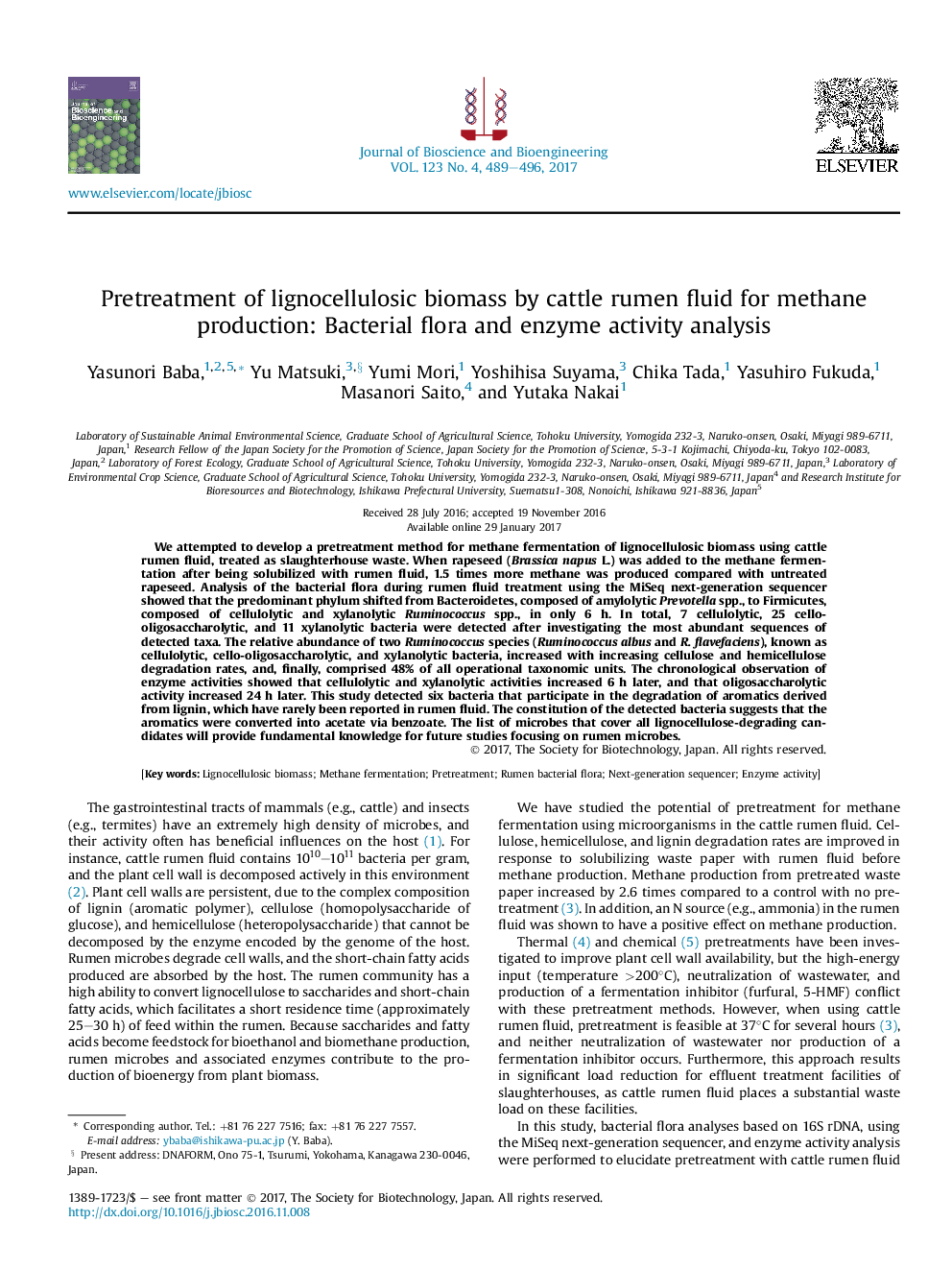| کد مقاله | کد نشریه | سال انتشار | مقاله انگلیسی | نسخه تمام متن |
|---|---|---|---|---|
| 4753332 | 1416555 | 2017 | 8 صفحه PDF | دانلود رایگان |
عنوان انگلیسی مقاله ISI
Pretreatment of lignocellulosic biomass by cattle rumen fluid for methane production: Bacterial flora and enzyme activity analysis
ترجمه فارسی عنوان
پیشگیری از زیست توده لیگنوسلولوزی توسط مایع گوشت گاو شکمبه برای تولید متان: تجزیه فعالیت فلور باکتری و آنزیم
دانلود مقاله + سفارش ترجمه
دانلود مقاله ISI انگلیسی
رایگان برای ایرانیان
کلمات کلیدی
زیست توده لیگنوسلولوزیک، تخمیر متان، پیش درمان فلور باکتریایی رامن، ترتیب سنج نسل بعدی، فعالیت آنزیم،
موضوعات مرتبط
مهندسی و علوم پایه
مهندسی شیمی
بیو مهندسی (مهندسی زیستی)
چکیده انگلیسی
We attempted to develop a pretreatment method for methane fermentation of lignocellulosic biomass using cattle rumen fluid, treated as slaughterhouse waste. When rapeseed (Brassica napus L.) was added to the methane fermentation after being solubilized with rumen fluid, 1.5 times more methane was produced compared with untreated rapeseed. Analysis of the bacterial flora during rumen fluid treatment using the MiSeq next-generation sequencer showed that the predominant phylum shifted from Bacteroidetes, composed of amylolytic Prevotella spp., to Firmicutes, composed of cellulolytic and xylanolytic Ruminococcus spp., in only 6Â h. In total, 7 cellulolytic, 25 cello-oligosaccharolytic, and 11 xylanolytic bacteria were detected after investigating the most abundant sequences of detected taxa. The relative abundance of two Ruminococcus species (Ruminococcus albus and R. flavefaciens), known as cellulolytic, cello-oligosaccharolytic, and xylanolytic bacteria, increased with increasing cellulose and hemicellulose degradation rates, and, finally, comprised 48% of all operational taxonomic units. The chronological observation of enzyme activities showed that cellulolytic and xylanolytic activities increased 6Â h later, and that oligosaccharolytic activity increased 24Â h later. This study detected six bacteria that participate in the degradation of aromatics derived from lignin, which have rarely been reported in rumen fluid. The constitution of the detected bacteria suggests that the aromatics were converted into acetate via benzoate. The list of microbes that cover all lignocellulose-degrading candidates will provide fundamental knowledge for future studies focusing on rumen microbes.
ناشر
Database: Elsevier - ScienceDirect (ساینس دایرکت)
Journal: Journal of Bioscience and Bioengineering - Volume 123, Issue 4, April 2017, Pages 489-496
Journal: Journal of Bioscience and Bioengineering - Volume 123, Issue 4, April 2017, Pages 489-496
نویسندگان
Yasunori Baba, Yu Matsuki, Yumi Mori, Yoshihisa Suyama, Chika Tada, Yasuhiro Fukuda, Masanori Saito, Yutaka Nakai,
